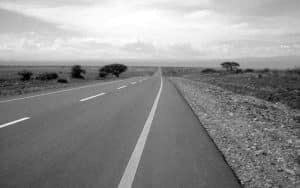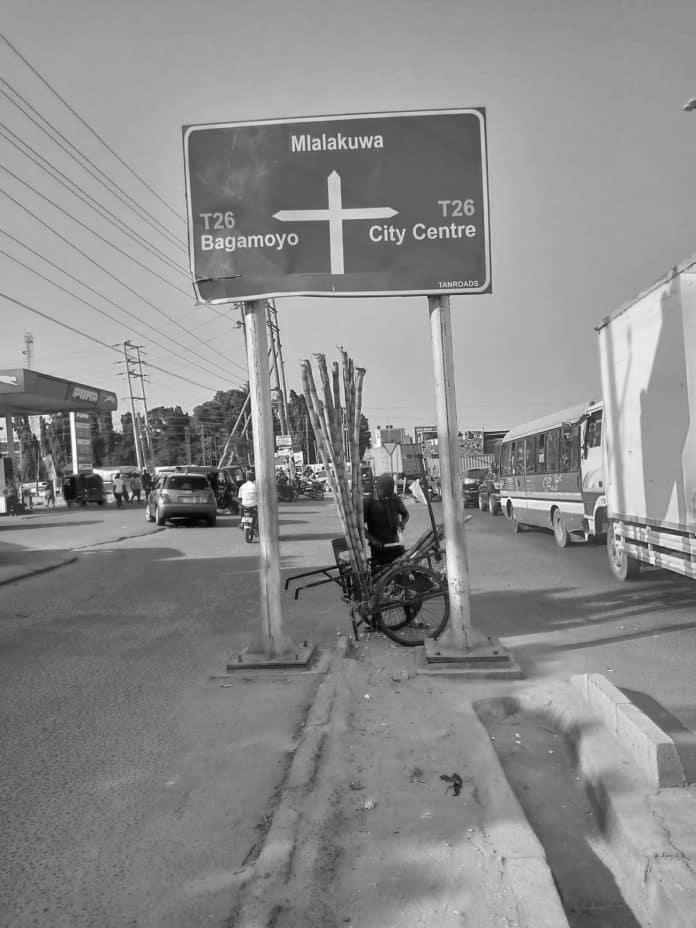Introduction to Dar es Salaam and Bagamoyo
Nestled along the stunning Tanzanian coastline, the cities of Dar es Salaam and Bagamoyo offer a captivating blend of history, culture, and natural beauty. As you embark on this coastal drive, you’ll have the opportunity to immerse yourself in the rich tapestry of Tanzania’s past and present, uncovering the stories that have shaped this remarkable region.
Dar es Salaam, the bustling commercial hub of Tanzania, serves as the starting point for your journey. Once a small fishing village, this vibrant city has evolved into a dynamic metropolis, boasting a thriving economy and a diverse cultural landscape. As you explore Dar es Salaam, you’ll be struck by the juxtaposition of modern skyscrapers and historic colonial buildings, each offering a glimpse into the city’s captivating past.
Your coastal drive will then take you northward, along the picturesque T26 route, to the charming town of Bagamoyo. This quaint coastal town has a long and storied history, having served as a crucial trading hub and a center of cultural exchange for centuries. As you navigate the winding roads, you’ll be treated to breathtaking vistas of the Indian Ocean, interspersed with lush mangrove forests and idyllic fishing villages.
Historical Significance of Dar es Salaam
Dar es Salaam’s history can be traced back to the mid-19th century, when the area was a small fishing village known as Mzizima. In 1866, the Sultan of Zanzibar, Majid bin Said, established a town on the site, naming it Dar es Salaam, which means “Haven of Peace” in Arabic. The town quickly grew in importance, becoming a major trading hub for the region and a center of German colonial administration in the late 19th century.
During the colonial era, Dar es Salaam underwent significant development, with the construction of grand buildings, wide avenues, and a bustling harbor. The city’s strategic location on the Indian Ocean coast made it a vital port for the export of agricultural products and the import of goods from around the world. This period also saw the influx of diverse populations, including Arab, Indian, and European settlers, who contributed to the city’s rich cultural tapestry.
Today, Dar es Salaam remains an important economic and political center, serving as the commercial capital of Tanzania. The city’s historic architecture, vibrant markets, and lively cultural scene continue to captivate visitors from around the globe, offering a unique glimpse into Tanzania’s past and present.
Exploring the Coastal Drive from Dar es Salaam to Bagamoyo
As you depart Dar es Salaam, the T26 coastal route will lead you on a scenic journey northward, hugging the sparkling waters of the Indian Ocean. This picturesque drive offers a chance to witness the transition from the bustling metropolis to the more serene and historic landscapes of Bagamoyo.
Along the way, you’ll encounter a diverse array of landscapes, from the rugged cliffs and rocky outcroppings that line the coastline to the lush, verdant mangrove forests that thrive in the estuaries and inlets. Keep an eye out for local fishermen casting their nets, traditional dhow sailboats gliding across the waves, and the occasional wildlife sighting, such as monkeys, birds, or even the elusive Colobus monkey.
As you approach Bagamoyo, the road winds through quaint coastal villages, where you’ll have the opportunity to interact with the friendly local residents and immerse yourself in the region’s rich cultural heritage. The pace of life here is decidedly slower, inviting you to savor the moment and soak in the timeless charm of this historic town.
Must-See Attractions Along the T26 Route

- Kaole Ruins: Located just outside of Bagamoyo, the Kaole Ruins are a well-preserved archaeological site that offers a glimpse into the region’s pre-colonial past. Explore the remnants of an ancient trading port, including the remains of mosques, tombs, and other structures that date back to the 13th century.
- Bagamoyo Old Town: As you enter Bagamoyo, the historic old town area will captivate you with its winding streets, colorful buildings, and a tangible sense of the past. Stroll through the bustling markets, visit the town’s iconic landmarks, and immerse yourself in the vibrant local culture.
- Bagamoyo Slave Trade Museum: This museum, housed in a former slave trade building, provides a poignant and educational look into the dark history of the East African slave trade. Exhibits and displays highlight the stories of those who were forced into slavery and the impact this trade had on the region.
- Kaole Mangrove Forests: Venture into the lush, verdant mangrove forests that line the coastline near Bagamoyo. These unique ecosystems are home to a diverse array of flora and fauna, and offer opportunities for birdwatching, kayaking, and exploring the intricate waterways.
- Livingstone Memorial: Pay tribute to the legendary explorer David Livingstone at this memorial, which marks the site where his body was carried before being transported to Zanzibar and ultimately to England.
Local Culture and Traditions in Bagamoyo
Bagamoyo is renowned for its rich cultural heritage, which has been shaped by the region’s long history as a center of trade and cultural exchange. As you explore the town, you’ll encounter a vibrant tapestry of traditions, customs, and artistic expressions that have been passed down through generations.
One of the most striking aspects of Bagamoyo’s culture is its thriving arts and crafts scene. The town is renowned for its skilled woodcarvers, weavers, and artisans, who create a wide range of intricate and beautiful products, from intricate wooden sculptures to vibrant textiles and handcrafted jewelry. Visitors can immerse themselves in this creative culture by visiting local workshops, participating in workshops, and browsing the town’s bustling markets.
Another integral part of Bagamoyo’s cultural identity is its strong connection to the region’s religious and spiritual traditions. The town is home to a number of historic mosques, churches, and other places of worship, reflecting the diverse religious influences that have shaped the area over time. Visitors can explore these sacred sites, attend local festivals and celebrations, and engage with the town’s religious community to gain a deeper understanding of the region’s spiritual heritage.
Historical Landmarks in Bagamoyo
Bagamoyo is a treasure trove of historical landmarks that offer a window into the town’s storied past. As you explore the streets and neighborhoods, you’ll encounter a range of sites that bear witness to the region’s rich history.
- Kaole Ruins: As mentioned earlier, the Kaole Ruins are an archaeological site that dates back to the 13th century, providing insight into the region’s pre-colonial trading networks and cultural influences.
- German Boma: This imposing colonial-era building was once the administrative center of German East Africa, serving as the seat of colonial power in the region. Today, it houses a museum that chronicles the history of German rule in Tanzania.
- Catholic Mission House: Constructed in the late 19th century, this historic building was the home of the first Catholic missionaries to arrive in Bagamoyo. It now serves as a cultural center and museum, showcasing the impact of Christian missionary activity on the region.
- Caravan Serai: Once a bustling hub for caravan traders, the Caravan Serai in Bagamoyo is a well-preserved example of the town’s important role in regional commerce and trade networks. Visitors can explore the site and imagine the vibrant activity that once took place here.
- Old Slave Market: A somber reminder of Bagamoyo’s past, the Old Slave Market stands as a testament to the horrors of the East African slave trade. The site now houses a memorial and museum that educates visitors about this dark chapter in the region’s history.
Best Time to Visit Dar es Salaam and Bagamoyo
The best time to visit Dar es Salaam and Bagamoyo is largely dependent on your personal preferences and the type of experience you’re seeking. However, the region generally enjoys a tropical climate, with two distinct rainy seasons and two dry seasons.
Dry Season (June to October): This is the peak tourist season, with cooler temperatures and lower humidity levels, making it an ideal time for outdoor activities and exploring the region’s historical sites and natural attractions. Crowds are generally larger, and accommodation prices may be higher during this period.
Rainy Season (November to May): While the rainy season can bring occasional downpours, it also offers a chance to experience the region’s lush, verdant landscapes and witness the vibrant local festivals and cultural events that take place during this time. Prices for accommodations and flights may be lower, and you’ll likely encounter fewer tourists, allowing for a more immersive and authentic experience.
Regardless of when you choose to visit, be sure to pack appropriate clothing, sun protection, and a sense of adventure to make the most of your coastal journey from Dar es Salaam to Bagamoyo.
Tips for a Memorable Coastal Drive
To ensure a truly memorable coastal drive from Dar es Salaam to Bagamoyo, consider the following tips:
- Plan your route: Research the T26 route and familiarize yourself with the key attractions and landmarks along the way. This will help you make the most of your journey and ensure you don’t miss any must-see sights.
- Pack wisely: In addition to comfortable clothing and sturdy shoes, be sure to pack items like a camera, binoculars, sunscreen, and a hat to enhance your experience.
- Embrace the pace: Avoid rushing through the drive; instead, take your time to soak in the stunning scenery, stop at local villages, and engage with the friendly residents along the way.
- Explore on foot: Once you reach Bagamoyo, set aside time to explore the town on foot, wandering through the historic streets and immersing yourself in the local culture.
- Indulge in the local cuisine: Savor the flavors of Tanzanian coastal cuisine, which features fresh seafood, spices, and traditional dishes that reflect the region’s diverse cultural influences.
- Respect local customs and traditions: Be mindful of the local customs and traditions, and engage with the community in a respectful and culturally sensitive manner.
- Consider a guided tour: Joining a guided tour can provide valuable insights into the history, culture, and natural wonders of the region, enhancing your overall experience.
By following these tips, you’ll be well on your way to a truly unforgettable coastal journey from Dar es Salaam to Bagamoyo.
Recommended Accommodations and Restaurants Along the Way
As you plan your coastal drive from Dar es Salaam to Bagamoyo, consider the following recommendations for accommodations and dining options to make your trip even more enjoyable:
Accommodations:
- Dar es Salaam: The Hyatt Regency Dar es Salaam, The Kilimanjaro – Offering stunning views of the Indian Ocean and modern amenities, this luxury hotel is an ideal base for exploring Dar es Salaam.
- Bagamoyo: Bagamoyo Beach Resort – This charming beachfront resort provides a serene and relaxing atmosphere, with comfortable accommodations and easy access to the town’s historical sites.
- Bagamoyo: Bwawani Hotel – A more budget-friendly option, this hotel offers clean and comfortable rooms, as well as a convenient location near the town center.
Restaurants:
- Dar es Salaam: The Waterfront Restaurant – Situated on the harbor, this restaurant offers a delightful dining experience with fresh seafood and panoramic views of the Indian Ocean.
- Bagamoyo: Jahazi Café – This cozy café serves up delicious Swahili-inspired cuisine, including traditional dishes and freshly caught seafood.
- Bagamoyo: Bagamoyo Beach Bar & Restaurant – Enjoy a casual dining experience with your toes in the sand, savoring local specialties and refreshing drinks.
By selecting these recommended accommodations and dining options, you’ll be able to enhance your coastal journey and immerse yourself in the rich cultural and culinary offerings of the region.
Conclusion: Reflecting on the journey

As you journey along the T26 route, you’ll not only witness the beauty of Tanzania’s coastline but also gain a deeper understanding of the country’s rich history and cultural heritage. From the bustling streets of Dar es Salaam to the serene charm of Bagamoyo, this coastal drive offers a truly unforgettable experience.
For more information on infrastructure click here!

































